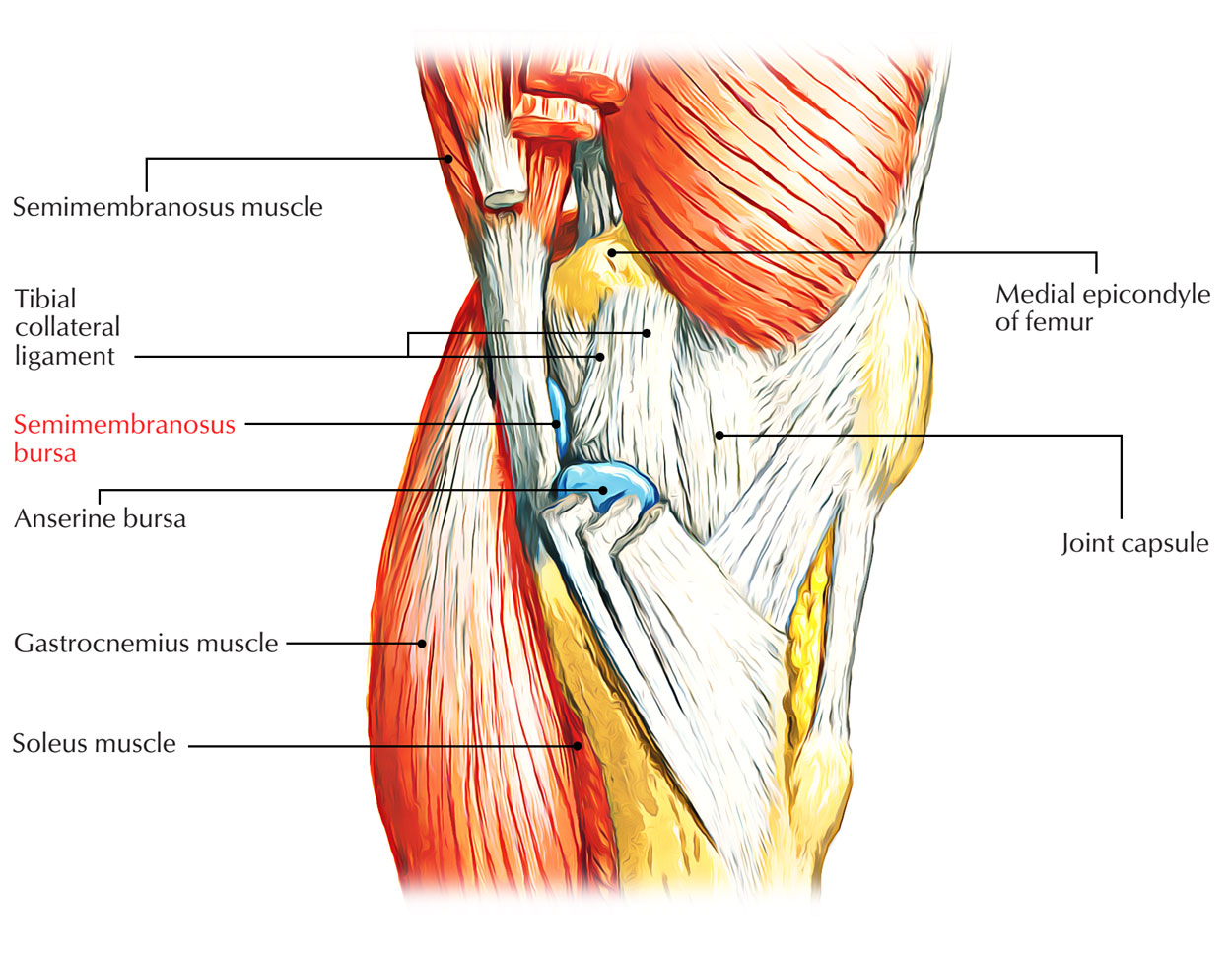The bursa remains in the medial aspect of the popliteal fossa in the middle of the medial head of the gastrocnemius as well as semimembranosus tendon. It regularly interacts with the knee joint.
The semimembranosus bursa sits in the middle of the hamstring tendons (semimembranosus) along with the gastrocnemius calf muscle.

Semimembranosus Bursa
A semimembranosus bursa is one of the most typical swelling in the popliteal fossa. This is discovered at the back of the knee and also is a common issue related to arthritis.
Inflammation here is called a Bakers Cyst or popliteal cyst triggering swelling along with pain behind the knee.
Etiology
Semimembranosus bursa might be primary or secondary to severe synovitis or knee osteoarthritis.
Age and Sex
Semimembranosus bursa happens in both sexes, from youth to midlife.
Clinical Significance
• Semimembranosus bursa provides as a cystic clear swelling on the inner side of the popliteal fossa. It ends up being tense on extension and relaxed and concealed on flexion of the knee joint.
• It might interact with the knee joint and soften with infection of the joint.
• In rheumatoid arthritis, it is normal for fluid to pass from the joint into the bursa, however not in the reverse directions, a ball-valve system obviously running.
• When a communication does not exist, the bursa will not naturally be reducible at all by pressure.
Differential Medical Diagnosis
Semimembranosus bursa needs to be differentiated primarily from the following:
Morrant Baker’s Cyst
• It indicates herniation of the synovial membrane of the knee joint through a weak part in the posterior element of the capsule (i.e. a pressure diverticulum of the synovial membrane through a hiatus in the capsule of the knee joint).
• It provides in the midline, below the joint line, as a soft cystic bulge. It is generally secondary to osteoarthritis therefore synovial shedding will typically be apparent.
Functions
• It lies in between semimembranosus tendon and femoral condyle above the knee joint line.
• It prevails in young person: in both sexes. It is most typical swelling of the popliteal fossa.
• When it expands it emerges of semimembranosus tendon to emerge as subcutaneous. It is non-tender.
• Cystic tensely cystic swelling situated superior as well as on medial element of the popliteal fossa, wobbly, non-compressible.
• Material of bursa does not interact with knee joint, so fluid cannot be decreased within the joint cavity.
• However typically appears drooping on flexion of knee by firm pressure most likely because of variation of fluid into much deeper openings of the bursa.
• The swelling ends up being tense when knee is extended.
• Knee joint is typical.

 (55 votes, average: 4.65 out of 5)
(55 votes, average: 4.65 out of 5)